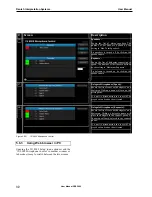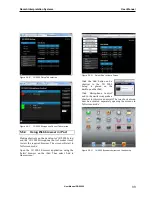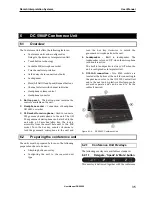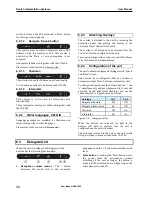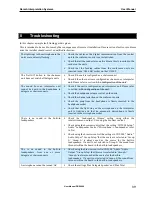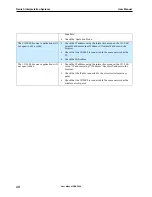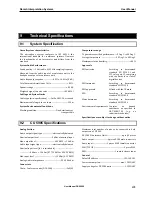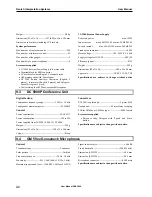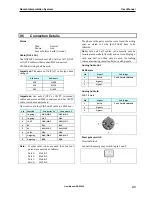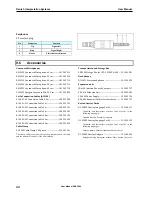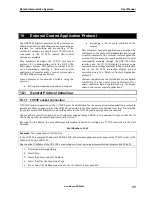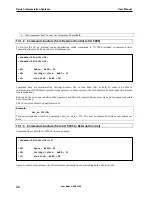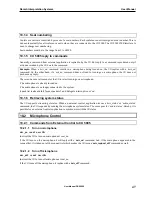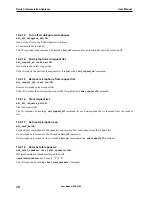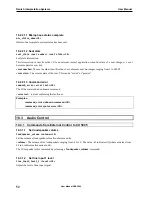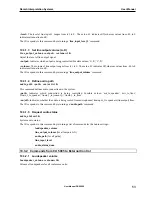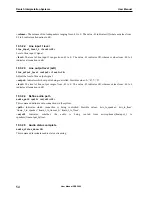
Danish Interpretation Systems
User Manual
6.
Give command ‘help’ to see a list of commands available.
10.1.2 Command structure (from External Control to CU 5905)
To control the CU an external control application sends commands to CU 5905 included in command lines.
Commands lines are build up in a very simple manner:
Command lines are terminated by Carriage Return <CR> or Line Feed <LF> or both. In order to be able to
communicate with Windows systems, Linux systems or other systems, the CU understands both types of command
<command><SP><data><CR>
<command><SP><data><LF>
<SP>
Space
‐
0x20
=
32
<CR>
Carriage
return
‐
0x0D
=
13
<LF>
Line
Feed
‐
0x0A
=
10
line terminations.
Notice also, there is a space between the command and data. If a command does not carry any data, space is possible
but not required.
The CU is not sensitive to upper/lower case.
Example:
mic_on
212<CR>
Turn on microphone a seat 212. Command = 'mic_on', data = '212'. The ‘mic_on’ command carries a seat number as
data.
10.1.3 Command structure (from CU 5905 to External Control)
Command lines out of the CU 5905 are just as simple:
Again, to satisfy most systems, the CU terminates command lines by including both <CR> and <LF>.
<command><SP><data><CR><LF>
<SP>
Space
‐
0x20
=
32
<CR>
Carriage
return
‐
0x0D
=
13
<LF>
Line
Feed
‐
0x0A
=
10
User Manual DDS 5900
46

